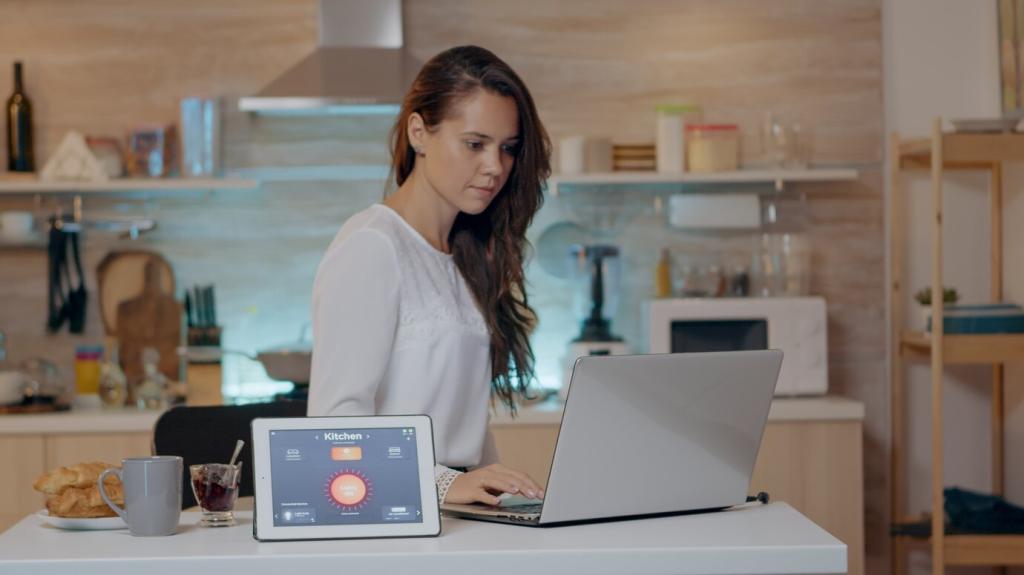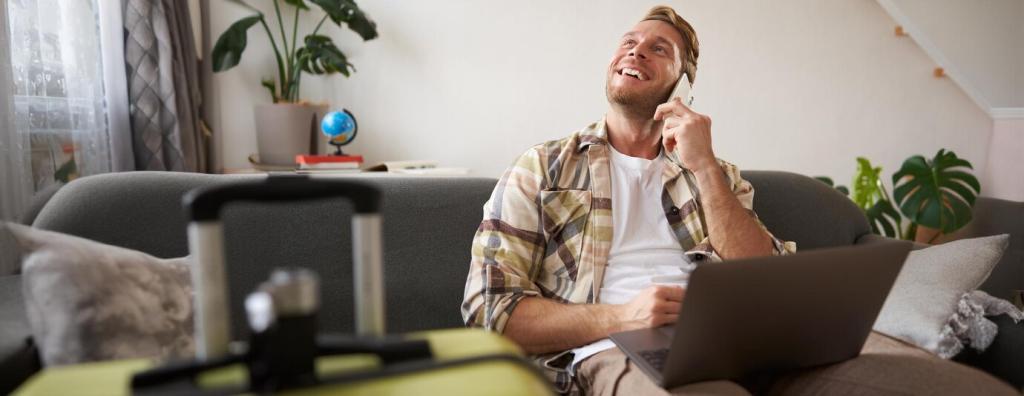Creating a Productive Home Office Environment
Chosen Theme: Creating a Productive Home Office Environment. Step into a workspace that sharpens your focus, fuels your energy, and brings out your best work. Here, you’ll find practical ideas, lived stories, and small upgrades that create big momentum. Share your setup, subscribe for fresh experiments, and let’s build your most effective home office together.


Posture Made Practical: Align Your Angles
Aim for relaxed shoulders, grounded feet, and hips slightly above knees to reduce pressure and maintain circulation. One reader, Maya, noticed fewer afternoon slumps after raising her seat a little and adding a footrest. Try it and comment on your results.

Monitor Height That Saves Your Neck
Set the top of your screen near eye level and an arm’s length away to avoid craning forward. A slim laptop stand plus an external keyboard often delivers instant relief. Share a photo of your setup so others can learn from your positioning.

Chair and Desk Pairing That Fits You
Adjust lumbar support so it meets the natural curve of your lower back, and keep forearms parallel to the desk. Even a budget-friendly cushion can change everything. If you try a tweak today, let us know what comfort boost you feel by day’s end.
Light, Air, and Nature: Energize Your Workspace
Use Natural Light Without the Glare
Place your desk perpendicular to a window to capture daylight while avoiding harsh reflections. Several readers report steadier mood and fewer headaches after shifting their desk a single meter. Try it this week and share your before-and-after impressions.
Task Lighting That Works With You
A dimmable, warm-to-neutral desk lamp reduces eye strain in late afternoons. Angle it to illuminate the work surface, not the screen. If you’ve found a lamp you love, drop a recommendation so the community can benefit from your discovery.
Green Touches That Calm and Clarify
A small plant or two can ease visual fatigue and subtly invite slower breathing. Low-maintenance options like pothos or snake plants thrive near indirect light. Post your favorite plant choice and how it changes your mood during long work sessions.
Rituals That Guard Your Focus
Open your task list, set a 50–90 minute focus block, and press play on a consistent instrumental playlist. This small routine tells your mind it’s time to create. Share your personal start-up steps and inspire someone else’s morning.
Rituals That Guard Your Focus
Choose one priority, set a friendly timer, and silence everything else. Many readers find two deep blocks before lunch double meaningful progress. Try a single-task sprint today and comment with the win you’re most proud of.



Visual Cues for Do-Not-Disturb
A door sign, a desk light, or visible headphones can politely communicate focus time. One parent told us a colored lamp saved their morning writing hour. What cue could you try this week to protect your prime energy?
Agreements That Keep Peace
Create quiet windows, shared calendars, and a quick hand-signal for true emergencies. Short family huddles reduce tension and interruptions. Tell us the ground rules that work at your place so others can adapt them gracefully.
Micro-Zones for Different Modes
Even in a small space, define spots for calls, deep work, and brainstorming. Switching zones resets attention and breaks mental ruts. Share your zone map—photos welcome—so fellow readers can learn from your layout ingenuity.
Personalize for Motivation, Not Distraction
Choose items that support your goals: a whiteboard for ideas, a timer for focus, a photo that reminds you why you care. If something steals attention, relocate it. What object truly helps you show up?
Pin a rotating set of quotes, sketches, or milestones to spark effort on sleepy afternoons. Refresh monthly to keep it alive. Share a snapshot of your wall and the story behind one meaningful item.
Subtle cues like citrus or cedar, and gentle ambient sound, can prime your brain for focused work. Keep them consistent to build a reliable association. Comment with your favorite pairing so others can try your formula.

Move, Recover, Sustain
01
Alternate between seated, standing, and brief stretch breaks to prevent stiffness and maintain alertness. Even two position changes per hour can help. What schedule works for you? Share your cadence so others can borrow it.
02
Step away, look at distant objects, and breathe slowly to reset your nervous system. Avoid scrolling, which often drains attention further. Tell us your favorite two-minute reset ritual and when you use it during demanding days.
03
Plan a real meal away from your keyboard and keep water within reach. A consistent mealtime protects focus for the afternoon sprint. Drop a simple, nourishing lunch idea the community can prep in under ten minutes.

